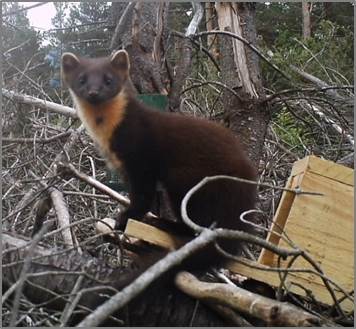Bloom at Chester Zoo highlights the spaces at the zoo and the incredible wildlife that can be found within them. There are many gardens just waiting to be explored, each different from the last and each with their own story to tell.
Our horticulture and botany team work hard all year round to make sure the gardens and spaces not only look great but also play a vital role in conserving local wildlife.
The team recently created a Bumblebee Garden to help our fuzzy friends find vital food and shelter as bumblebee populations are disappearing at a worrying rate.
Below we take a look at some of the other work our conservationists are doing to help UK wildlife beyond the zoo thrive. We’ve highlighted a couple of their successes over the past 12 months…
BUMPER YEAR FOR DORMICE
The hazel dormouse is rare in the UK and, sadly, there has been a long-term drop in its numbers and range. We’ve been monitoring a wild dormouse population for over a decade. After a number of slightly below average years between 2012 and 2015, dormouse surveys at our study site in North Wales recorded a bumper year last year with more individuals seen in October 2016 than ever before!
This data is still being analysed, but it seems likely that 2016 is a year in which some females may have had two litters, and the first litter may have also bred themselves. These years are hard to detect, but micro-chipping the dormice gives us a unique opportunity to identify these uncommon behaviours, which are rarely confirmed in UK dormouse populations.
These bumper breeding years are thought to be critical for maintaining dormouse population levels, and it’s reassuring that 2016 looked like it was a great year!
TRACKING PINE MARTENS
Pine martens are thriving in Scotland, but in England and Wales the population is very fragile. Two years ago we joined forces with The Vincent Wildlife Trust on their pine marten recovery project, to restore viable populations of pine martens to Wales.
For the past two years the project has relocated pine martens from Scotland to mid-Wales. Once the animals are relocated they are given a ‘soft release’ to ensure that they’re given as much of a chance as possible to adjust to their new surroundings. The translocation has been very successful with 20 pine martens being relocated in 2015 and a further 19 individuals in 2016.

It’s not just about moving the animals; our staff help monitor the success of the translocation and the progress of the animals using camera traps, radio tracking and field surveys. These tracking methods enable the project to obtain further information so, for example, we know that at least half of the females released in the first year successfully gave birth in Wales which is an excellent result. The next stage of the project is to continue following this year’s released individuals, find out if they will also successfully raise young and to see which habitats are favoured for permanent territories.